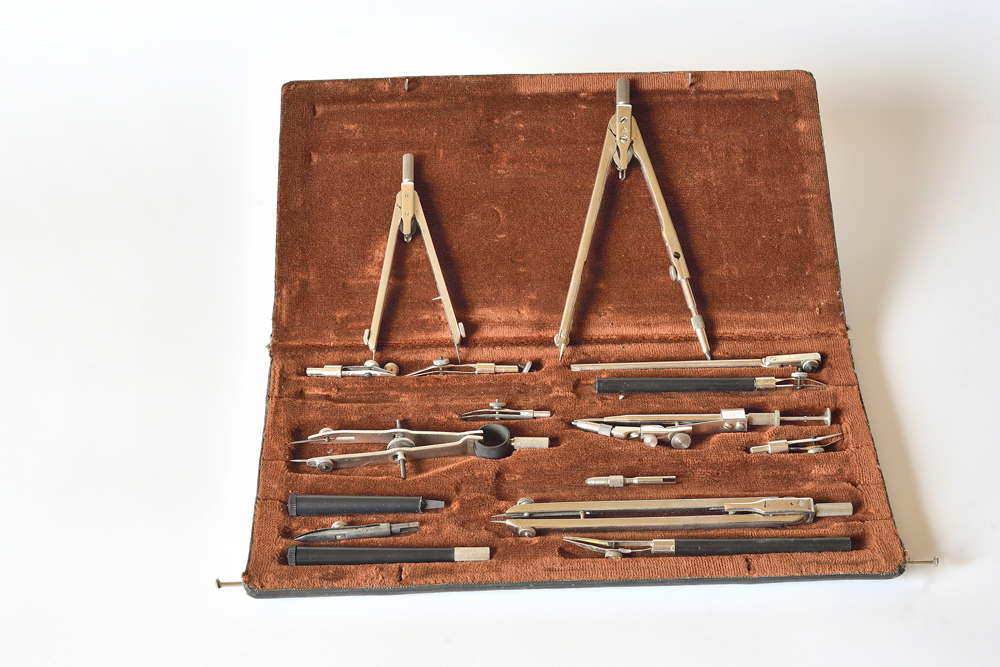
Image: Vintage Drafting tools, copyright Adobe Stock/Grigory
I am a loyal, frustrated, enthusiastic, passive member of the American Institute of Architects (AIA). I watch it commit tactical errors, abandon initiatives, be fleeced by corporate sponsors (full disclosure: I was one such sponsor in a past career), and generally spend too much time looking in the mirror. Its punitive dues structure reminds me of the Middle Age window tax, which left us only with fewer windows and the Mansard roof. Indeed, I don’t have strong feelings about the AIA, but I DO feel strongly about architecture as a way of thinking, as a practice and as a profession. And, it is a simple reality that the AIA is the only enterprise with even a whisper of a hope of translating my personal passion into the collective action required to defend it. Therefore, I am a member – not reluctantly – but with reservations and a wary eye.
But, lest I appear as arrogant as I actually am, I’ll add that I am also a guilty member. I pay my dues to the Institute, but not what is due my profession. No one needs to tell me what to do for the AIA; I’m already over-educated. For every good reason to participate, I’ll pay you five to procrastinate. I just need to budget my time and make it a priority to contribute to rather than abandon the Institute because, as Ben Franklin may have actually said, “if we don’t hang together, we will surely hang separately.” I promise. I’m getting to it. Soon. Really.
Most architects have heard the old cliché that architecture is a great profession, but a lousy business. It’s true for too many architects, but it is a lousy business because it is a WEAK profession. Our talent to think creatively as individuals undermines the imperative to act collectively as an industry. We’re bad lemmings.
We don’t appreciate that architecture is still a young profession that is not as universally accepted, understood or respected as our peers in medicine and law. Although buildings were obviously being designed by individuals and groups for centuries, the idea that the practice of architecture might be a “profession” was born only in the late 18th century as a preoccupation for gentlemen (and it sadly remains a hobby for many of us). The Architect’s Club, founded in England in 1791, was one of the first architectural societies and admitted only members of the Royal Academy or other fine arts academies. The first professional organizations did not begin until the early 19th century in Europe and the US with the formation, in December 1836, of the American Institution of Architects by Thomas U. Walter and a handful of Northeastern architects.
The profession evolved gradually during the late 19th century in the US and Europe, but licensing and protection of the title, “architect”, were not pervasive until well into the 20th century. By this measure, our profession is not yet a century old. Architects like to trace their roots to “master builders” of centuries past – and even as far as the Egyptian god, Imhoptep (my gods, we’re egotistical!) – but it is unclear whether the modern equivalent of yesterday’s “master builder” translates into today’s architect or is, in fact, just a general contractor.
Far from being an organization struggling for relevancy past its prime, I believe that the AIA is struggling with the profession’s adolescence. As a father of teenage boys, I actually know something about this. The hard work of defining and defending territory is not pretty, but it is essential for to grow and prosper. Architects may represent the last bastion of generalist three-dimensional thinking in a world beset with problems. Only through organization, however, can we make our case to the world of how good we are as a group, while elevating ourselves individually to actually become as good as we claim.
Our organization is the AIA.
